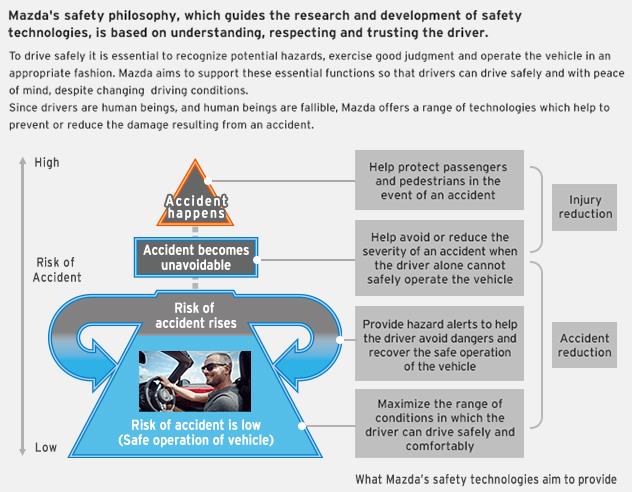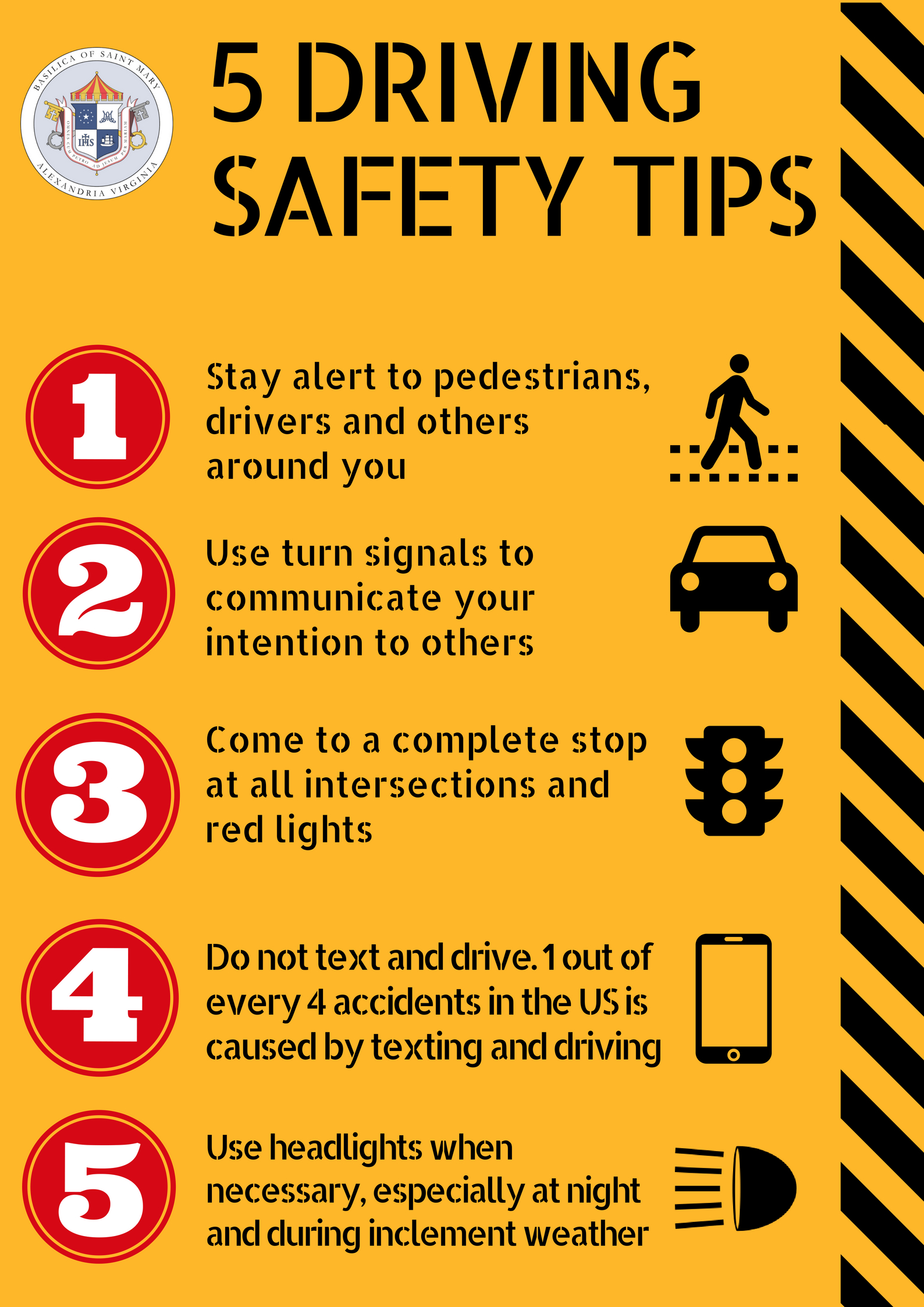A Guide to Safe Driving Assumptions

In the world of driving, safety is paramount. Every year, millions of people around the globe get behind the wheel, embarking on journeys that can range from mundane daily commutes to thrilling road trips. With so many variables and potential hazards, ensuring a safe driving experience is a multifaceted task that requires knowledge, skill, and, most importantly, a solid understanding of the assumptions and best practices that govern safe driving.
In this comprehensive guide, we delve into the intricacies of safe driving assumptions, shedding light on the principles, strategies, and techniques that underpin responsible and secure motoring. By exploring the key aspects of safe driving, from understanding vehicle mechanics to navigating diverse road conditions, we aim to empower drivers with the knowledge and confidence to tackle any journey with assurance.
Mastering Vehicle Mechanics: The Foundation of Safe Driving

At the heart of safe driving lies a comprehensive understanding of vehicle mechanics. Familiarity with the intricate workings of your vehicle is crucial for maintaining control and making informed decisions on the road. From the fundamentals of engine operation to the nuanced interactions between various vehicle systems, mastering vehicle mechanics forms the bedrock of safe driving.
Let's delve into some key aspects of vehicle mechanics that every driver should be aware of:
Engine and Transmission: The Powerhouse of Your Vehicle
The engine and transmission are the core components that propel your vehicle forward. Understanding their basic principles is essential for efficient driving. Engines convert fuel into mechanical energy, powering the vehicle’s movement, while transmissions regulate the transfer of this energy, allowing for smooth acceleration and deceleration.
| Engine Type | Key Characteristics |
|---|---|
| Internal Combustion Engine (ICE) | The most common engine type, utilizing fuel combustion to generate power. Available in various configurations like gasoline, diesel, and hybrid engines. |
| Electric Motor | Powered by electricity, offering zero-emission driving and instant torque. Found in battery electric vehicles (BEVs) and hybrid electric vehicles (HEVs) |

Transmissions, on the other hand, play a crucial role in controlling the vehicle's speed and torque. Modern vehicles often feature advanced transmission systems, such as continuously variable transmissions (CVTs) and dual-clutch transmissions (DCTs), offering seamless gear shifts and improved fuel efficiency.
Suspension and Steering: Navigating the Road with Precision
The suspension and steering systems of a vehicle are responsible for ensuring a smooth and controlled ride. Understanding their functionality is vital for maintaining stability and maneuverability, especially in challenging road conditions.
Suspension systems, comprising springs, shock absorbers, and other components, work to absorb road shocks and vibrations, providing a comfortable and controlled driving experience. Different suspension setups, such as MacPherson struts and multi-link systems, offer varying levels of performance and handling.
Steering systems, meanwhile, enable drivers to control the vehicle's direction with precision. Modern vehicles employ either hydraulic or electric power steering systems, offering assistance to the driver, especially at low speeds. Understanding the characteristics of your steering system is crucial for executing precise maneuvers and maintaining control.
Braking Systems: Stopping Power at Your Fingertips
The braking system is a critical component of any vehicle, responsible for bringing it to a halt safely and efficiently. Modern braking systems have evolved significantly, incorporating advanced technologies to enhance stopping power and stability.
| Braking System Type | Key Features |
|---|---|
| Disc Brakes | Utilizing brake pads and rotors, disc brakes offer superior stopping power and are commonly found on modern vehicles. They provide consistent performance and are less prone to fading compared to drum brakes. |
| Drum Brakes | While less common in modern vehicles, drum brakes are still used in certain applications, especially for rear wheels. They are cost-effective and offer adequate performance for lighter vehicles. |
| Anti-lock Braking System (ABS) | A critical safety feature, ABS prevents wheel lockup during sudden braking, allowing drivers to maintain steering control. ABS is now a standard feature on most vehicles, significantly enhancing braking safety. |
Navigating Road Conditions: Adapting to the Environment

Driving safely requires more than just understanding your vehicle; it also involves navigating a myriad of road conditions, each presenting its own unique challenges. From bustling city streets to winding country roads, and from harsh weather conditions to varied terrain, drivers must be adept at adapting their driving style to suit the environment.
Urban Driving: Maneuvering Through the Concrete Jungle
Navigating urban areas can be a complex task, given the high density of vehicles, pedestrians, and potential obstacles. Safe driving in urban environments requires a heightened sense of awareness, quick decision-making, and a delicate balance between speed and control.
Here are some key considerations for safe urban driving:
- Pedestrian Awareness: Urban areas are bustling with pedestrians, making it crucial to maintain a constant vigil for people crossing roads, especially at intersections and near schools or public spaces.
- Traffic Congestion: Heavy traffic is a common occurrence in cities, requiring drivers to adapt their driving style to suit the flow. Maintaining a safe following distance and being prepared for sudden stops is essential.
- Road Infrastructure: Urban roads often feature a variety of road markings, signs, and signals. Understanding and adhering to these indicators is vital for maintaining order and safety on the roads.
Rural and Country Roads: Exploring the Open Spaces
While rural and country roads offer a more relaxed driving experience, they also present their own set of challenges. These roads often feature winding routes, varying terrain, and reduced visibility, necessitating a different approach to driving.
Consider the following when navigating rural and country roads:
- Speed and Visibility: Country roads often have higher speed limits, but reduced visibility due to curves and hills. Adjust your speed accordingly and maintain a keen eye for potential hazards, such as wildlife or unexpected turns.
- Road Surface Conditions: Rural roads may have varying surfaces, from smooth asphalt to gravel or dirt. Be mindful of these changes and adjust your driving style to maintain control.
- Wildlife Encounters: Animals crossing the road are a common occurrence in rural areas. Stay vigilant, especially during dawn and dusk, and be prepared to slow down or stop if necessary.
Weather and Seasonal Driving: Adapting to Mother Nature
Weather conditions can significantly impact driving safety, requiring drivers to adapt their approach based on the elements. From heavy rain and snow to strong winds and fog, each weather condition presents its own challenges.
Here's a guide to safe driving in various weather conditions:
- Rain and Wet Roads: Reduce your speed and maintain a larger following distance. Ensure your windshield wipers are functioning properly and consider using your low-beam headlights for better visibility.
- Snow and Ice: Drive slowly and gently, avoiding sudden movements. Keep a generous distance from other vehicles and be prepared for slippery conditions. Equip your vehicle with snow tires or chains for improved traction.
- Strong Winds: Hold the steering wheel firmly and maintain a steady course. Be mindful of high-sided vehicles and motorcycles, as they may be affected more by the wind. Avoid driving through fallen trees or debris.
- Fog: Slow down and use your low-beam headlights to maximize visibility. Avoid using high beams, as they can reflect off the fog and reduce visibility further. Be prepared for sudden stops and maintain a safe distance from the vehicle in front.
Defensive Driving: Anticipating and Responding to Hazards
Defensive driving is a crucial aspect of safe driving, involving a proactive approach to anticipating and responding to potential hazards on the road. It requires a combination of awareness, skill, and quick decision-making to navigate unpredictable situations safely.
The Principles of Defensive Driving
Defensive driving is rooted in a set of core principles that guide drivers in making informed decisions and taking appropriate actions. These principles include:
- Situational Awareness: Maintaining a constant vigil of your surroundings, including other vehicles, pedestrians, and potential hazards. Being aware of your position on the road and the actions of other road users is crucial for making timely decisions.
- Anticipation and Prediction: Using your knowledge of road conditions and traffic patterns to anticipate potential hazards. By recognizing patterns and predicting the actions of other drivers, you can be prepared for unexpected situations.
- Safe Following Distance: Maintaining a safe distance from the vehicle in front allows you to react to sudden stops or changes in traffic flow. The recommended following distance varies based on speed and road conditions, but a general rule is to allow at least two seconds of gap between your vehicle and the one ahead.
- Slow and Controlled Driving: Defensive driving involves maintaining a moderate speed and being prepared to slow down or stop at any moment. This approach allows you to react to unexpected hazards without losing control of your vehicle.
Practicing Defensive Driving Techniques
Defensive driving is a skill that can be honed and perfected over time. Here are some practical techniques to incorporate into your driving routine:
- Scan the Road Ahead: Keep your eyes moving, scanning the road ahead for potential hazards. Look beyond the vehicle in front to anticipate changes in traffic flow and potential obstacles.
- Mirror Check and Blind Spot Monitoring: Regularly check your mirrors and blind spots to ensure you're aware of vehicles in adjacent lanes. This practice is especially crucial when changing lanes or merging onto highways.
- Use Your Signals: Signal your intentions early and clearly to other drivers. This simple act can prevent misunderstandings and potential collisions.
- Maintain a Safe Speed: Drive at a speed that allows you to react to unexpected situations. Avoid speeding, especially in areas with reduced visibility or heavy traffic.
Conclusion: Empowering Safe Driving with Knowledge and Practice
Safe driving is a skill that evolves with experience and knowledge. By understanding the mechanics of your vehicle, adapting to diverse road conditions, and practicing defensive driving techniques, you can enhance your safety and that of others on the road. Remember, safe driving is a continuous learning process, and by staying vigilant, aware, and adaptable, you can confidently navigate any journey.
FAQ

What are some common misconceptions about safe driving?
+One common misconception is that safe driving solely relies on skill and experience. While these are important factors, safe driving also requires a comprehensive understanding of vehicle mechanics, road conditions, and defensive driving techniques. Additionally, many drivers underestimate the impact of external factors like weather conditions and road infrastructure on their safety.
How can I improve my situational awareness while driving?
+Improving situational awareness is crucial for safe driving. Some practical tips include scanning the road ahead frequently, checking mirrors and blind spots regularly, and being mindful of your position on the road. Additionally, staying informed about traffic conditions and potential hazards can help you anticipate and respond to situations effectively.
What are some tips for driving in heavy rain or snow?
+When driving in adverse weather conditions like heavy rain or snow, it’s crucial to reduce your speed and maintain a larger following distance. Ensure your vehicle is equipped with appropriate tires for the conditions, and consider using low-beam headlights for better visibility. Stay alert for sudden stops and be prepared to adjust your driving style to suit the slippery conditions.



